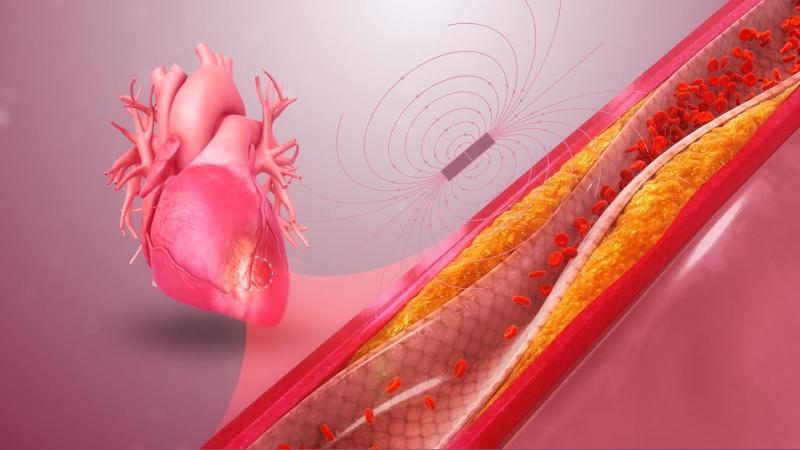
Magnetic fields can potentially aid heart disease treatment: Study
Heart disease is one of the leading causes of mortality globally, with atherosclerosis being a major contributing factor. Atherosclerosis is the buildup of plaque in the arteries, which can lead to blockages and reduced blood flow to the heart, brain, and other vital organs. Researchers at IIT Bombay have made a groundbreaking discovery that could potentially revolutionize the treatment of heart disease. According to a recent study, magnetic fields can regulate blood flow in partially blocked arteries, reducing the risk of plaque rupture and improving overall heart health.
The study, published on Research Matters, found that aligning magnetic fields with blood flow in partially blocked arteries increased the speed of blood flow and reduced pressure near the blockages. This innovative approach has the potential to aid in the treatment of heart disease, which affects millions of people worldwide.
Understanding Atherosclerosis
Atherosclerosis is a complex condition that occurs when plaque builds up in the arteries, leading to narrowing and hardening of the blood vessels. This buildup is caused by the accumulation of cholesterol, fat, and other substances in the arteries. As the plaque grows, it can eventually block the flow of blood to the heart, brain, and other vital organs, leading to serious health consequences.
The Innovative Approach
The IIT Bombay study used a unique approach to investigate the potential benefits of magnetic fields in regulating blood flow in partially blocked arteries. The researchers used a technique called magnetohydrodynamics, which involves applying a magnetic field to the blood flow in the arteries. This magnetic field, in turn, influences the behavior of the blood cells and the blood itself, allowing for a more efficient flow of blood.
Experimental Setup
The researchers conducted their experiments using a specially designed setup that mimicked the conditions found in partially blocked arteries. They created a model of a partially blocked artery and then applied a magnetic field to the blood flow. The magnetic field was aligned with the direction of the blood flow, allowing the researchers to observe the effects on the blood flow.
Results
The results of the study were impressive. The researchers found that the application of the magnetic field significantly increased the speed of blood flow in the partially blocked arteries. Additionally, the pressure near the blockages was reduced, which in turn reduced the risk of plaque rupture.
Implications for Heart Disease Treatment
The implications of this study are significant. The discovery that magnetic fields can regulate blood flow in partially blocked arteries could potentially aid in the treatment of heart disease. By aligning the magnetic fields with the direction of the blood flow, doctors may be able to reduce the risk of plaque rupture and improve overall heart health.
Safety Evaluations and Further Research
While the study shows great promise, further research is needed to fully understand the potential benefits and risks of using magnetic fields in heart disease treatment. Safety evaluations will be necessary to ensure that the treatment is safe for patients and to determine the optimal application of the magnetic fields.
Conclusion
The IIT Bombay study is a significant breakthrough in the fight against heart disease. The discovery that magnetic fields can regulate blood flow in partially blocked arteries has the potential to aid in the treatment of this devastating condition. While further research is needed, the study provides hope for a new and innovative approach to treating heart disease. With the potential to reduce the risk of plaque rupture and improve overall heart health, this study is an important step forward in the quest to combat heart disease.
News Source
https://researchmatters.in/news/magnetic-field-regulates-blood-flow-partially-blocked-arteries






